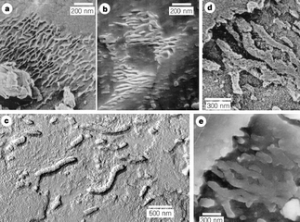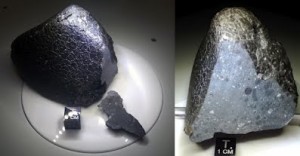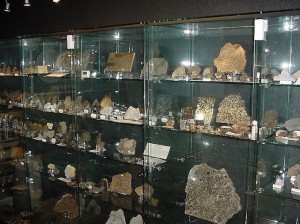by: Nicole Willett
Last week NASA’s Curiosity rover made history by drilling into the first rock on another planet. The rock, named John Klein, had a hole drilled that was 0.63 inches in diameter and 2.5 inches deep. Surprisingly, the soil beneath the iron red surface was bright grey. The soil sample has been sent to the suite of instruments in the belly of the rover, including SAM and CheMin. These mini laboratories will analyze the soil content to find out its composition. Everyone is anxiously awaiting the results of these tests. Unfortunately, Curiosity went into “safe mode” several days ago due to a corrupt file on its main computer. (As this blog was being posted, NASA announced that the computer had returned to “active status”.) This will inevitably delay the results. However that does not stop people from speculating about what the science lab onboard the rover might discover.
 Scientists are hoping to find more evidence of past water on Mars. What would be even more amazing is if Curiosity found evidence of an extreme organism or extremophile. Because Curiosity drilled into a rock, they may find evidence of an extreme organism known as a lithotroph, aka a “rock-eater”. Astrobiologists have been studying these extremophiles for many years and have discovered many amazing things about them. An extremophile is a general term for any organism that lives beyond what is commonly thought of as “normal” conditions.
Scientists are hoping to find more evidence of past water on Mars. What would be even more amazing is if Curiosity found evidence of an extreme organism or extremophile. Because Curiosity drilled into a rock, they may find evidence of an extreme organism known as a lithotroph, aka a “rock-eater”. Astrobiologists have been studying these extremophiles for many years and have discovered many amazing things about them. An extremophile is a general term for any organism that lives beyond what is commonly thought of as “normal” conditions.Astrobiologists have looked at rocks from the most inhospitable places on Earth. They have found organisms living beneath rocks, between rocks and inside of rocks. There are several types of rock-eaters, and they have been given unusual names like autolithotrophs, hypoendoliths and cryptoendoliths. They are known collectively as lithotrophs. These organisms are truly rock-eaters. They actually digest the rock they live on or inside of. Lithotrophs have developed a unique way to metabolize the minerals in the rocks. These organisms have learned to survive in very extreme environments. If a lithotroph was found on the Red Planet, it would be a polyextremophile that is highly resistant to ultra-violet (UV) radiation, able to tolerate dry and desiccating conditions and tolerant to extremely cold temperatures. A polyextremophile is an organism that lives beyond the realm of what the general public sees as normal with several extreme adaptations for survival. Some live exposed to so much UV radiation that it kills almost every other organism in the vicinity. These are known as radio resistant organisms.
 Other organisms referred to as xerophiles live in places that receive little to no rainfall for years or even decades. There are also organisms that live in extremely cold conditions. These are known as psychrophiles, or cryophiles. They can survive temperatures as low as -15o C. On Earth, cryophiles live in salty or briny sea water. The salt and minerals in the water lower the freezing point. This is another interesting twist to the conditions scientists are seeking on or below the Martian surface. We know the mineral content of the soil in the many areas we have visited on Mars. They are similar in composition to the places on Earth that harbor many types of extremophiles.
Other organisms referred to as xerophiles live in places that receive little to no rainfall for years or even decades. There are also organisms that live in extremely cold conditions. These are known as psychrophiles, or cryophiles. They can survive temperatures as low as -15o C. On Earth, cryophiles live in salty or briny sea water. The salt and minerals in the water lower the freezing point. This is another interesting twist to the conditions scientists are seeking on or below the Martian surface. We know the mineral content of the soil in the many areas we have visited on Mars. They are similar in composition to the places on Earth that harbor many types of extremophiles.It has been said by astrobiologists that if the Viking Lander would have landed in the Atacama Desert on Earth, it very likely would not have detected life. This is due to the types of organisms that have adapted to live there. They would not have been recognized by the sophisticated equipment on Viking. The Atacama Desert is frequently used as a Mars-Earth analog for astrobiology experiments.
 The more we seek, the more we find. The more we find, the more questions we have. Curiosity is an interesting double entendre. Our rover is named Curiosity, and human curiosity is what drives us to explore in space and on Mars. As Professor Brian Cox once said, “I don’t need answers to everything; I want to have answers to find.”
The more we seek, the more we find. The more we find, the more questions we have. Curiosity is an interesting double entendre. Our rover is named Curiosity, and human curiosity is what drives us to explore in space and on Mars. As Professor Brian Cox once said, “I don’t need answers to everything; I want to have answers to find.” 




